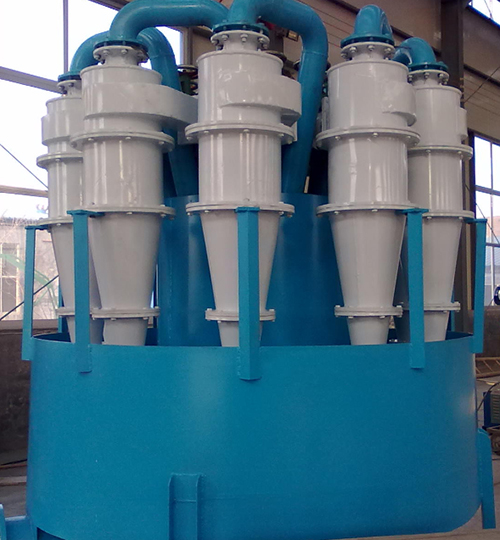Everwin Technical Ceramic Co.,Ltd

Hydro-cyclones are cono-cylindrical in shape, with a tangential feed inlet into the cylindrical section and an outlet at each axis. The outlet at the cylindrical section is called the vortex finder and extends into the cyclone to reduce short-circuit flow directly from the inlet. At the conical end is the second outlet, the spigot. For size separation, both outlets are generally open to the atmosphere. Hydrocyclones are generally operated vertically with the spigot at the lower end, hence the coarse product is called the underflow and the fine product, leaving the vortex finder, the overflow. Figure 1 schematically shows the principal flow and design features of a typical hydrocyclone: the two vortices, the tangential feed inlet and the axial outlets. Except for the immediate region of the tangential inlet, the fluid motion within the cyclone has radial symmetry. If one or both of the outlets are open to the atmosphere, a low pressure zone causes a gas core along the vertical axis, inside the inner vortex.
The operating principle is simple: the fluid, carrying the suspended particles, enters the cyclone tangentially, spirals downward and produces a centrifugal field in free vortex flow. Larger particles move through the fluid to the outside of the cyclone in a spiral motion, and exit through the spigot with a fraction of the liquid. Due to the limiting area of the spigot, an inner vortex, rotating in the same direction as the outer vortex but flowing upward, is established and leaves the cyclone through the vortex finder, carrying most of the liquid and finer particles with it. If the spigot capacity is exceeded, the air core is closed off and the spigot discharge changes from an umbrella-shaped spray to a ‘rope’ and a loss of coarse material to the overflow.
The diameter of the cylindrical section is the major variable affecting the size of particle that can be separated, although the outlet diameters can be changed independently to alter the separation achieved. While early workers experimented with cyclones as small as 5 mm diameter, commercial hydrocyclone diameters currently range from 10 mm to 2.5 m, with separating sizes for particles of density 2700 kg m−3 of 1.5–300 μm, decreasing with increased particle density. Operating pressure drop ranges from 10 bar for small diameters to 0.5 bar for large units. To increase capacity, multiple small hydrocyclones may be manifolded from a single feed line.
Although the principle of operation is simple, many aspects of their operation are still poorly understood, and hydrocyclone selection and prediction for industrial operation are largely empirical.